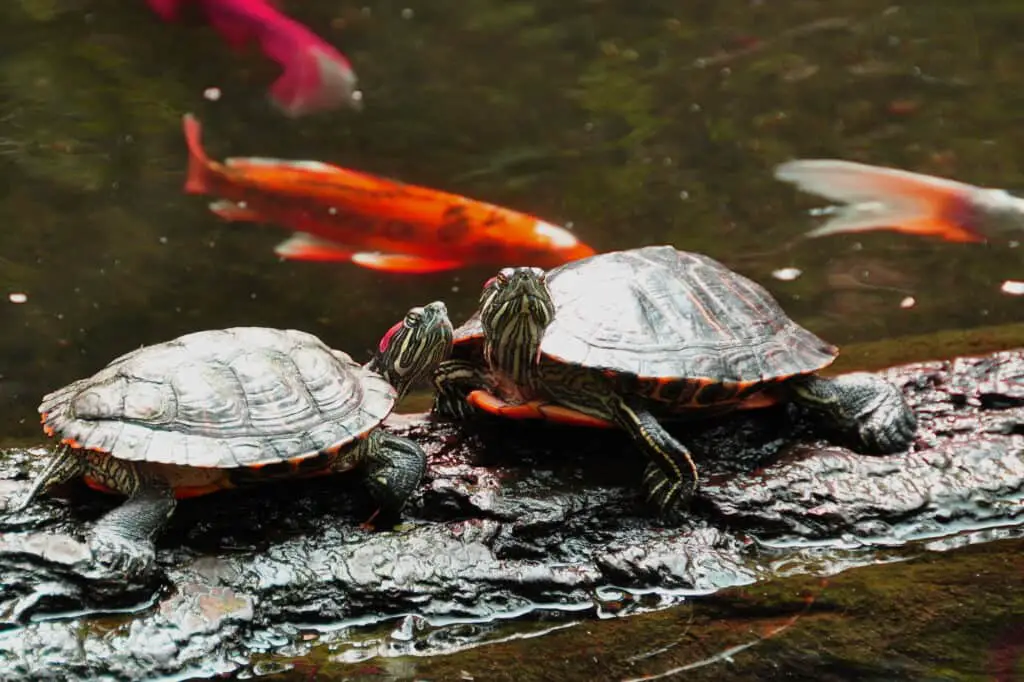
Although it is unlikely that koi and turtles would encounter each other in the wild, the popularity of both animals as domesticated pets has led to many people wondering if these two aquatic animals can live side-by-side in an artificial enclosure. Let’s find out below if koi and turtles can live together.
Koi and turtles can be kept in the same pond, provided the species of turtles are not an aggressive, carnivorous variety such as snapping turtles. Turtles are also harder to care for than koi, requiring pond alterations and a varied diet to keep them happy and healthy.
To better understand how you can create a safe and happy environment for cohabiting koi and turtles. We will be looking at the behavior of turtles and koi, their specific needs, and how you can successfully adopt a koi pond to include turtles into a koi’s ecosystem.
What Is The Nature Of Koi And Turtles?

Koi are omnivorous animals, usually docile fish, which seldom engage in fights or territorial disputes with other animals. Although omnivorous, they rarely consume other fish or aquatic life, save for small insects.
However, if koi are not regularly fed or are in a cramped enclosure, they may be prone to aggression and/or the consumption of other aquatic life, such as smaller fish or other marine animals.
Koi have also been known to chase and bite one another during mating season. While they seldom cause damage or stress to other koi, the large size of koi fish may cause harm and distress to different aquatic life, such as tiny turtles.
While most turtles are docile omnivores that eat insects and small fish, there are breeds of turtles that are aggressive carnivores that may cause distress to other aquatic life.
Consequently, while koi seldom attack or eat tiny turtles, more aggressive breeds of turtles have been known to attack and eat smaller koi. Some species of turtles, such as snapping turtles, have been known to attack koi that are much larger than them, causing permanent damage to their fins and tails!
In conclusion, koi are unlikely to harm turtles, regardless of their size difference. It is recommended that smaller koi be kept separate from turtles that may consider them as prey and to invest in more docile species of turtles rather than carnivorous breeds.
If you want to learn more about what animals can live in a pond with koi fish, you can read these blog posts:
- Can Glofish Live With Koi Fish?
- Can Bass Live With Koi Fish?
- Can Angelfish Live With Koi Fish?
- Can African Dwarf Frogs Live With Koi Fish?
How Do I Adapt My Koi Pond For Turtles?

While koi are straightforward animals to care for, you will need to make some changes to your koi pond when introducing turtles to the ecosystem; this is because turtles are harder to care for, but they can cause destruction and imbalances to a koi’s fragile ecosystem.
How To Feed Turtles And Koi
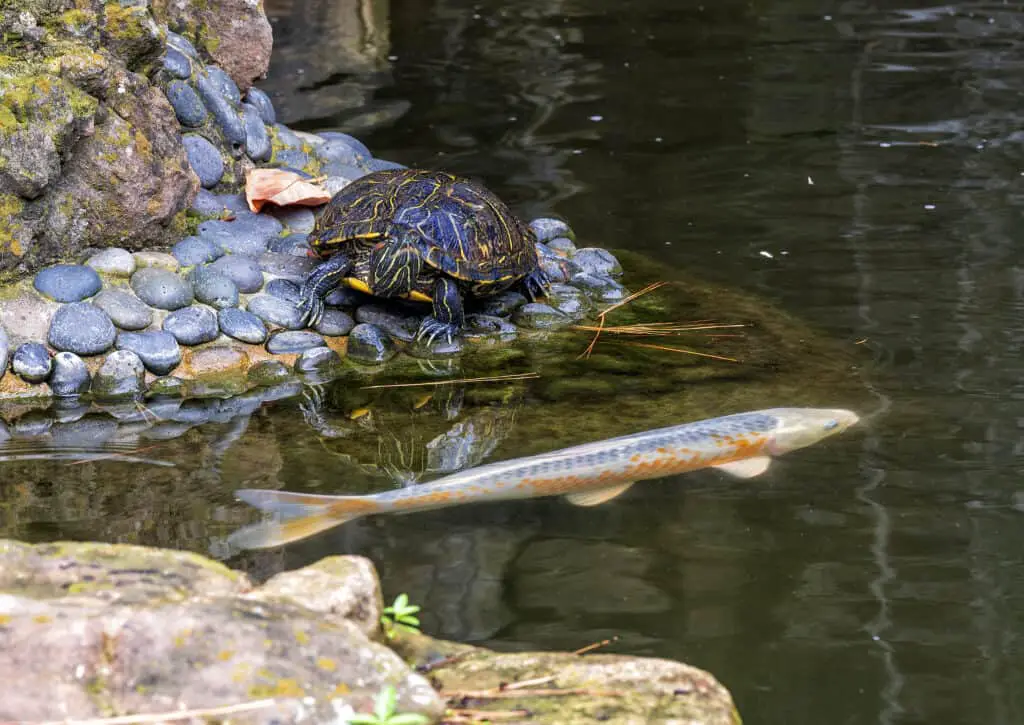
Although most koi are happy to eat fish pellets with little to no variation in their diet, turtles need to be given various food options to keep them well-fed and happy.
Consequently, omnivorous turtles should have access to natural vegetation to graze and specially formulated turtle pellets containing the necessary nutrients and vitamins to keep them well fed.
However, turtles cannot have a diet of pellets alone, meaning that you must invest in a variety of vegetables and meat, so they have a balanced diet.
Fortunately, because turtles can access land and koi cannot, you can feed turtles via land-based dishes so that the turtles have exclusive access to their food without having to worry about the koi and turtles competing for food.
Turtles Can Be Dirty And Destructive
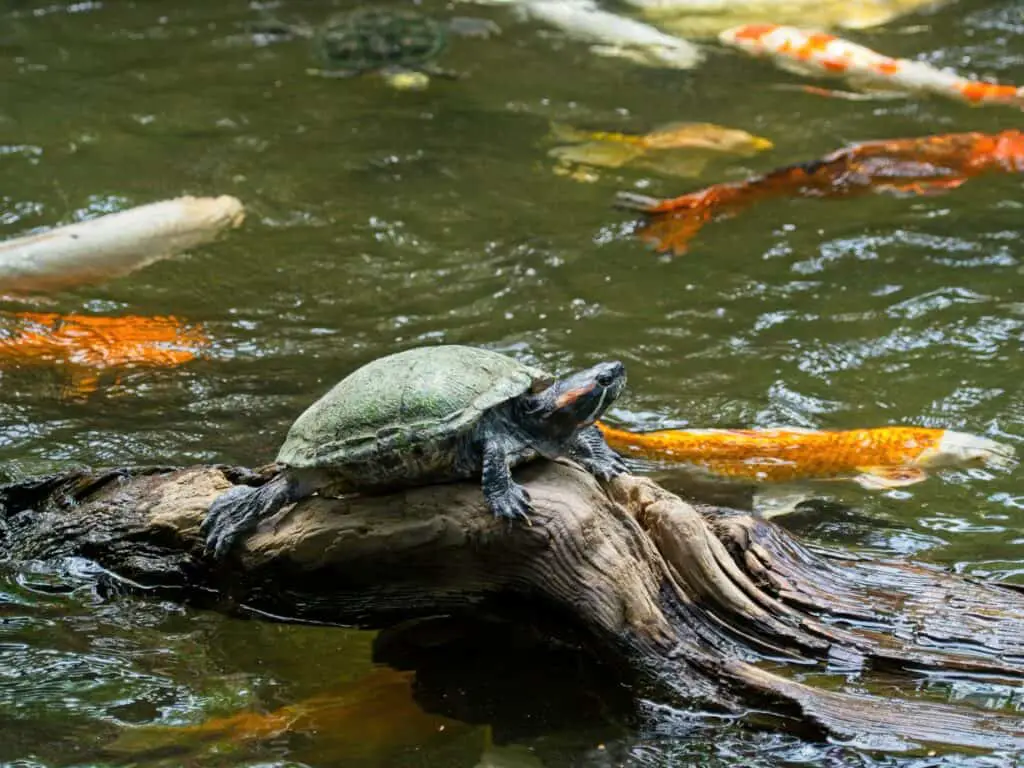
Due to a more varied diet compared to koi, turtles produce waste with increased levels of ammonia and consistency, which can reduce water quality and place increased pressure on koi pond filters.
Therefore, when you add turtles to your koi pond, you will need to install larger, improved filters and a pond vacuum. Furthermore, manual inspection, cleaning, and replacement of filters are necessary for retaining a clean and healthy pond for both animals.
Finally, turtles have sharp claws and a tendency to dig/explore ponds. These claws can damage your pond lining, meaning that you will need to monitor your pond lining and/or regularly replace this lining with more rigid materials.
Turtle Basking
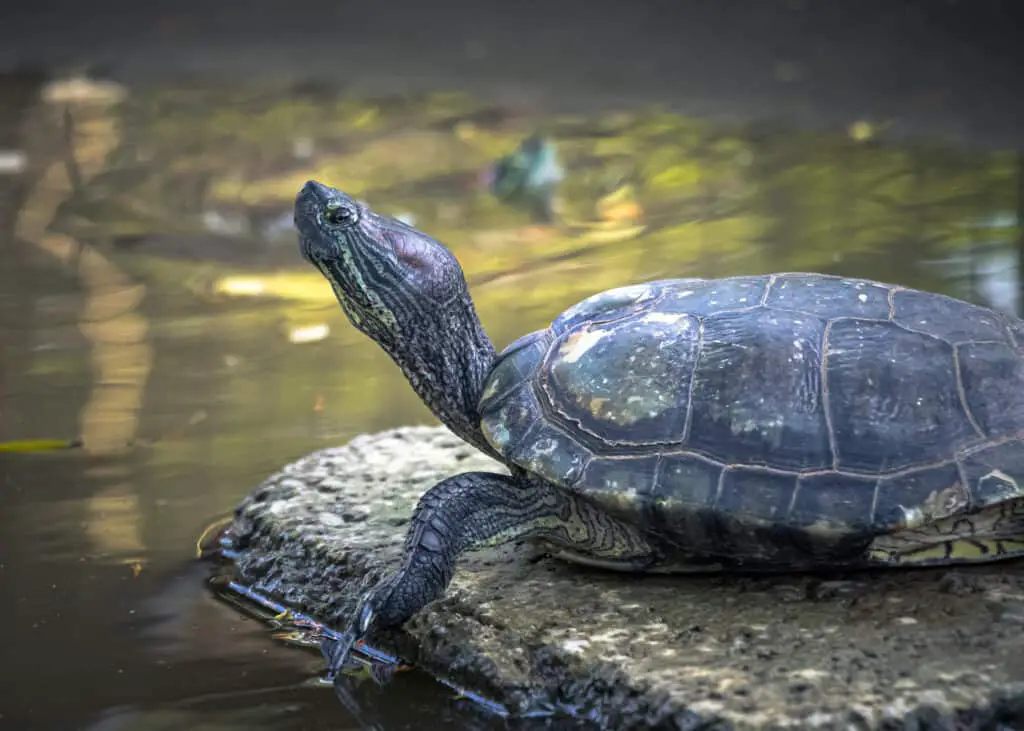
While koi fish are solely aquatic, turtles are amphibious animals that enjoy sunbathing. This activity is known as “turtle basking” and is essential in keeping turtles happy and healthy.
Therefore, while most koi fish ponds do not have ramps or driftwood, these should be included to allow turtles to exit the pond at their leisure and engage in turtle basking.
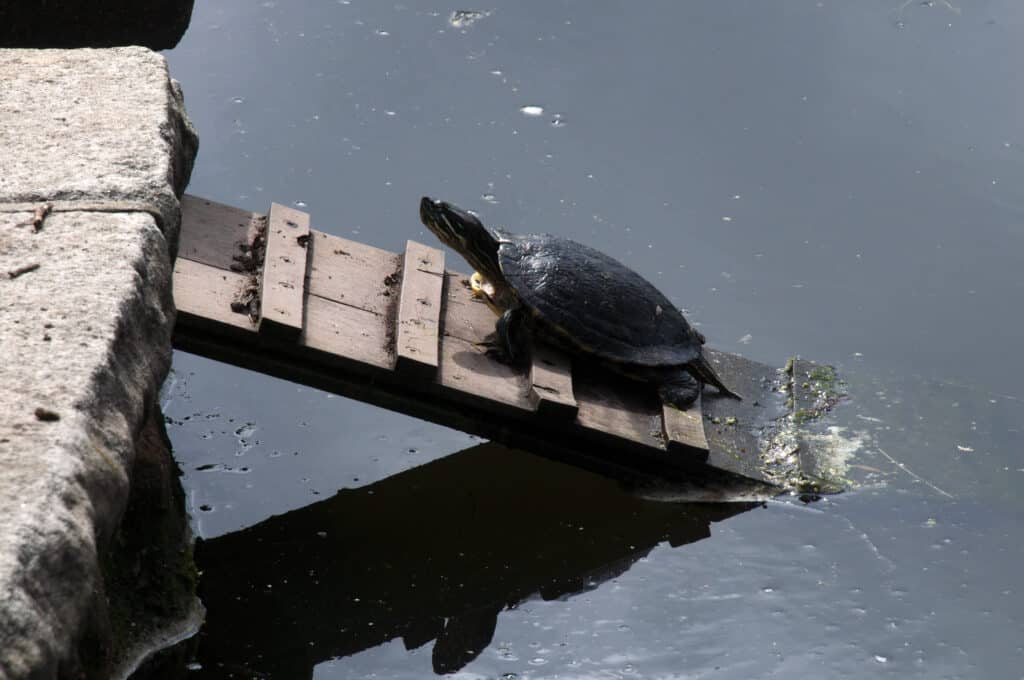
Pond Barriers
Although it is essential to create ramps and introduce driftwood to promote turtle basking, this freedom of movement means that turtles may leave the vicinity of the pond and get lost or venture into dangerous parts of your garden.
To avoid your turtles becoming lost or exposing themselves to dangerous elements/predators, you must construct a barrier around the pond that has a large enough ground surface area to allow your turtles to bask while being sturdy enough to keep turtles in a designated area.
Selecting The Correct Breed Of Turtle And Koi
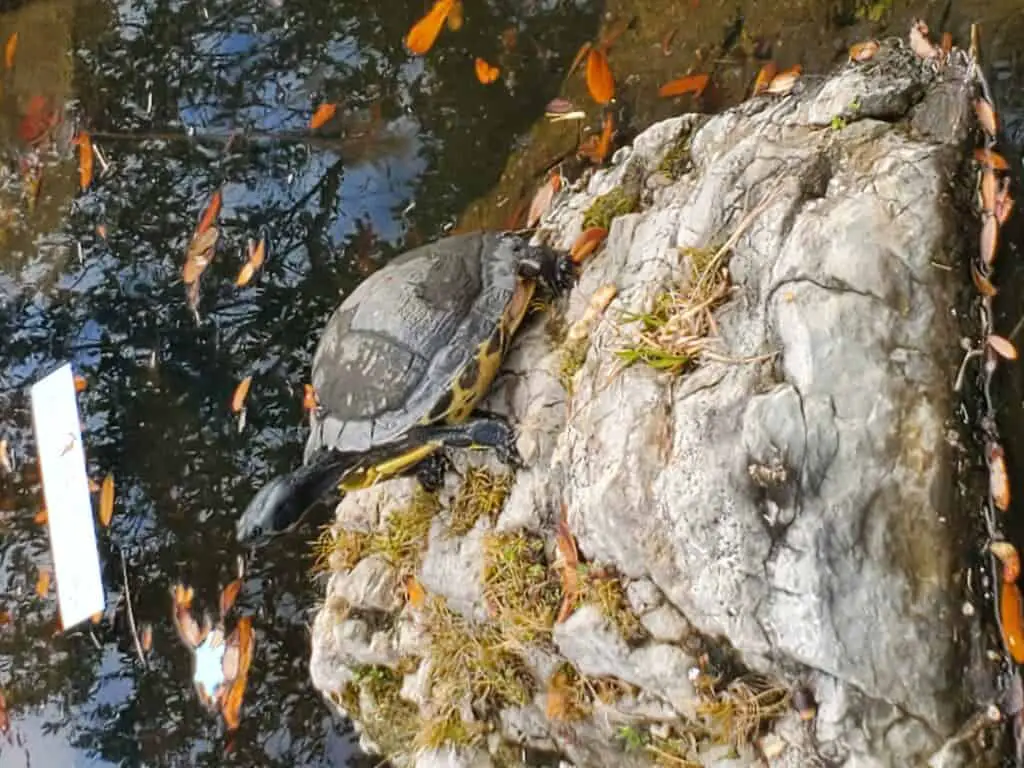
Finally, because different breeds of turtle and koi have different dietary requirements, space requirements, vegetation needs, water temperatures, and sun exposure, you must choose koi and turtle breeds with significant environmental overlap.
Furthermore, certain states may have laws that only allow for the introduction of native species of turtles to a pond and may not qualify for exotic breeds of turtles. Make sure to adhere to these rules and regulations to avoid any legal penalties and to ensure your species of turtle is suited to your state’s natural environment and weather patterns.
Conclusion
In conclusion, while it is possible to have a safe and equipped pond for coexistence between koi and turtles, you must adhere to the requirements and needs of each animal. Hence, they live in a harmonious and not confrontational state.
Related Blog Posts:
- Can Parrot Fish Live With Koi Fish?
- Can Axolotls Live With Koi Fish?
- Best Catfish For Koi Pond
- Can I Put An Algae Eater In My Koi Pond?
References
https://www.quora.com/Can-koi-fish-live-with-turtles
https://www.animalpicturesarchive.com/can-koi-and-turtles-live-together/
https://www.animalpicturesarchive.com/do-koi-fish-eat-baby-turtles/

